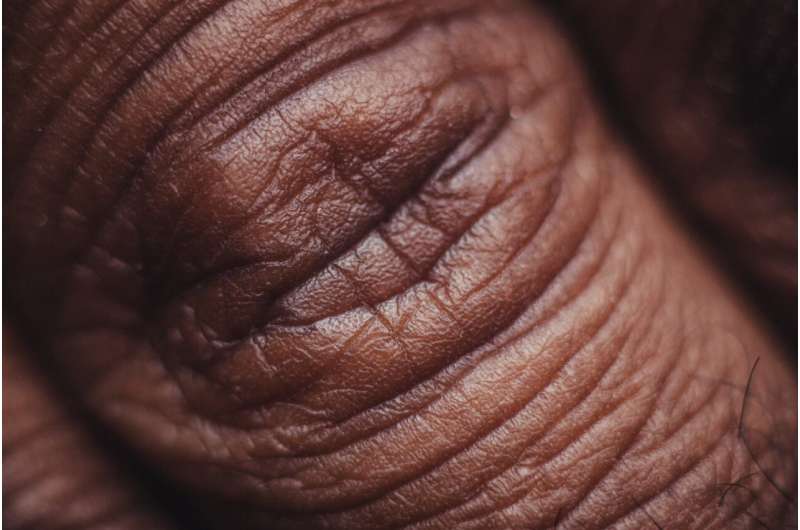Credit: Unsplash/CC0 Public Domain
DEAR MAYO CLINIC: I have a significant number of moles. While most do not bother me, I have at least one that bleeds from time to time. Should I see my doctor for a mole that bleeds?
ANSWER: Moles are groups of pigment cells, and nearly everyone has them. Most moles are harmless, but it's possible for melanoma—a rare but serious skin cancer—to develop in or near a mole. Although it may not be serious, a mole that bleeds is a possible sign of melanoma.
Melanoma develops in cells called melanocytes that produce melanin—the pigment that gives your skin its color. The exact cause of all melanomas isn't clear, but exposure to ultraviolet, or UV, radiation from sunlight or tanning beds increases your risk of developing the disease.
Moles often appear as small, dark brown spots, and they are caused by clusters of pigmented cells. Moles generally appear during childhood and adolescence. Most people have 10 to 40 moles.
Moles can develop anywhere on your body, including your scalp, armpits, under your nails, and between your fingers and toes. They may contain hairs or become raised or wrinkled. Moles may change in appearance or fade away over time. Hormonal changes of adolescence and pregnancy can cause moles to become darker and larger.
It is important to talk to your health care provider if you notice any changes in your moles, and being evaluated by a dermatologist annually and checking your skin regularly are two excellent steps you should take to catch melanoma and other types of skin cancer early. The sooner skin cancer is found, the better the chances are of curing it.
It's not always easy to distinguish melanoma from a normal mole or another area of pigmentation. One of the most important things you can do is to become familiar with the location and pattern of your moles, and monitor them for changes. Examine your body in front of a mirror. Ask someone to look at your back. If you notice any changes in shape, size or color of a mole, or a new mole with rapid growth, show it to your health care provider. If it looks suspicious, your health care provider or a dermatologist can biopsy and remove the mole to have it checked for cancerous cells. This procedure is usually quick, and it may be all the treatment that is needed.
When checking your moles, follow the ABCDE guide from the American Academy of Dermatology. Look for:
- Asymmetry, where one half of a mole looks different than the other half.
- Border irregularity, where borders of a mole are uneven, jagged or scalloped.
- Color variations within the same mole.
- Diameter greater than the eraser tip of a pencil.
- Evolving color, shape or size.
Another helpful strategy is to look for the so-called ugly duckling. Most normal moles will look similar to each other, while melanomas will stand out by being smaller, larger, lighter or darker, compared to other moles on your body. In addition to melanoma, other kinds of skin cancer, including basal cell carcinoma and squamous cell carcinoma, tend to look like pink, red or scaly spots on your skin that do not go away on their own.
If you are found to have a mole that is cancerous, your doctor will perform a surgical procedure to remove it. If you have a mole that causes irritation when you shave, you also may want to have it removed.
Finally, remember that prevention is key. Whenever possible, stay out of the sun during the middle of the day when UV light is the strongest. When you are outdoors, use sun-protective clothing and a broad-spectrum UV A/UV B sunblock with a with a sun protection factor, or SPF, of at least 50.
—Dr. Jason Sluzevich, Dermatology, Mayo Clinic, Jacksonville, Florida
2021 Mayo Clinic News Network. Distributed by Tribune Content Agency, LLC.























